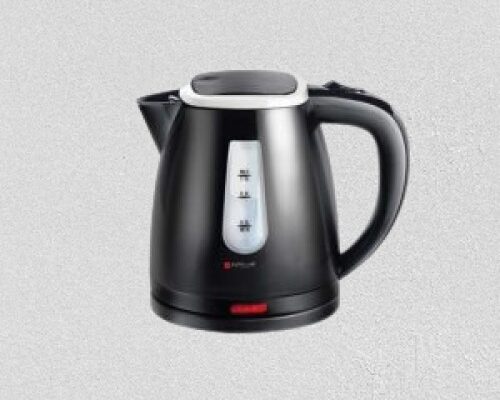A kettle is perhaps one of the most used kitchen utensils around the world. Almost every household does have a kettle, yes I have one. However, in the beginning, kettles were designed to be placed on the fire directly and this fire, in turn, heats the liquid inside the kettle. This was how things for a long time until the introduction of electric kettle in the year 1893. However, this date is not absolute, electric kettles were in use even before 1893, but the actual commercial boom came in 1893.
What exactly is an electric kettle?
An electric kettle as the name suggests is a type of kettle that heats liquid in it without actually keeping it on the stovetop or directly above the heat. An electric kettle comes with a heating element inside it, which, heats the liquid inside the kettle within comparatively least time.
An electric kettle is one of the simplest household appliances available on the market right now. There are more than a thousand models of electric kettles available on the market today. When you plug in an electric kettle to an outlet, a large amount of electric current passes through the cord and it, in turn, heats the heating element. The element heats because of the resistance offered by the heating element. This resistance converts the electrical energy into heat, which, in turn, heats the liquid inside the kettle.
How does electric kettle work?
An electric kettle is a single electric kitchen appliance, but it comes with two different important parts. These two parts work hand in hand to produce an efficient output.
The first main part is
- Heating element
- Thermostat
In the beginning, electric kettles did not have any complicated functioning, the only thing they have was a well-built body and then a heating element inside. The user had to manually switch off the kettle once the liquid in it boils. However, new electric kettles are different.
1. Heating element – The heating element in an electric kettle is the most important part, without a heating element, an electric kettle is worthless.
A heating element is a resistor that is designed to resist the flow of electricity, which, in turn, heats. In other words, the heating element converts electricity to heat and this heat boils the liquid inside the kettle.
2. Thermostat – As I told above, a thermostat is a part incorporated into new electric kettles. A thermostat is always connected to the heating element in such a way that, the thermostat can control the heating element. A thermostat plays the role of controlling the heating capacity of the heating element and also switch off the power once the required temperature is attained.
Now, let us see how an electric kettle works,
The heating element in an electric kettle is connected to the thermostat and the thermostat has a variable resistor inside it, once the user sets the required temperature the thermostat controls the heating element accordingly. To be simple, if the user sets the temperature to high, then the thermostat resistor resistance would be less, therefore the heating element converts more electricity to heat. On the other hand, if a low temperature is set, the variable resistor resistance is high and the heating element will produce comparatively less heat.
- If the user sets the temperature to high
Power supply -> thermostat temperature set high -> transistor sends high current to heating element -> heating element produces a high amount of heat.
- If the user sets the temperature to low
Power supply -> thermostat temperature set low -> transistor sends low current to heating element -> heating element produces less amount of heat.
As you have seen above, an electric kettle has several advantages. This is why the number of the electric kettles has been increasing for the past few years. If you are a person looking for an electric kettle, then we recommend that you read the above-mentioned facts and purchase one soon.





